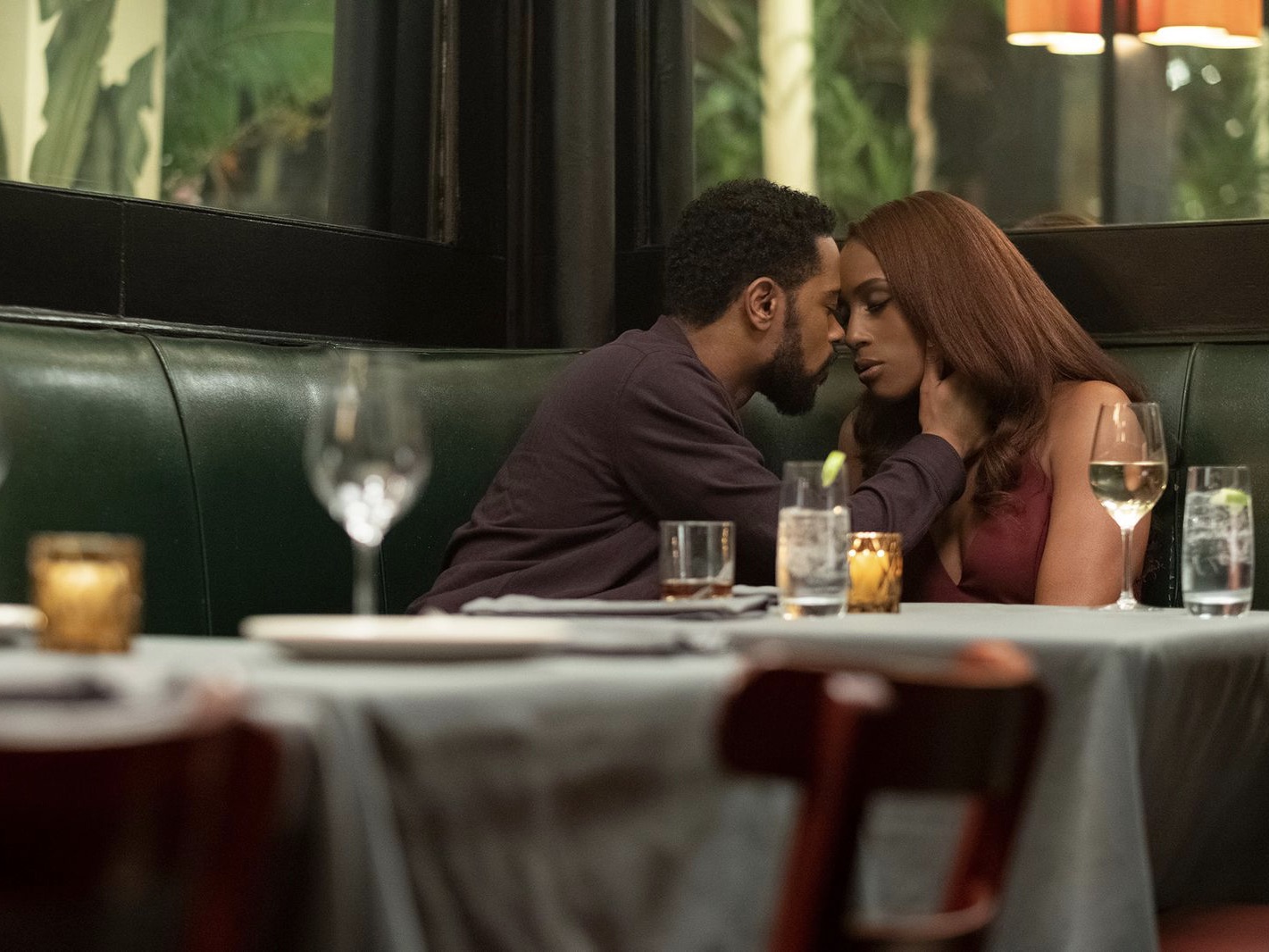Everyone loves a good romantic movie. Even if it’s not that person’s favorite genre, anyone who watches films has that one love story that they can re-watch a trillion times. Starring Issa Rae and Lakeith Standfield, “The Photograph” sums up February, the month of love and Black History Month — neither of which deserves the shortest month of the year.
Premiering on Valentine’s Day, “The Photograph” follows two couples between past and present, dealing with modern-day struggles of staying in love instead of falling into it. This is the first time in a long time — if ever — that a love story featured on Valentine’s Day also stared a mainly black cast. Yes, love is love and all love is wonderful, but there is something different about black love and seeing it depicted on the silver screen.
When Essence reporter Brittney Oliver asked what black love meant to couples, Shanika answered with this definition: “A common trope within black love is, strength, both individually and collectively. Navigating this life as a Black body is so beautiful, and with it, comes its own set of unique experiences. Within black love there is a deep understanding of this.” Compared to other love stories, black romance films possess a deeper connection because of a shared struggle, especially when the viewer is also black. Bottom line — it just hits different.
The main protagonists of “The Photograph,” Mae Morton and Michael Block, first meet at Mae’s job. She is a curator at a Queens museum, and Michael is a journalist working on a story about Mae’s mother, Christina. Christina was a young ambitious photographer whose passion was taking photos despite her mother’s disapproval of both her passion and the man she loved, Issac.
The criticism from Christina’s mother stemmed from the fact that Issac was only a fisherman, content with living in rural Louisiana. In present time, Christina had passed, leaving Mae feeling unresolved about her mother’s death since their relationship was estranged. Christina had said a few times in the movie that she was never “good” at love. Which makes the audience question, what does it truly mean to be good at love? Is anyone really good at love?
“The Photograph” follows Michael and Mae’s story and Christina and Issac’s, simultaneously. The audience will notice the similarities with the help of the parallel timelines. One big similarity worth noting is that Christina’s mother and Christina both died of sicknesses, and neither one told their daughters they were dying. A generational curse of holding secrets and feeling that strength is sought through withstanding hardships alone.
Even though this is a romantic film, it also represents another type of love — mother-daughter relationships and the passage of generations. The film depicts how easy it is to make the same mistakes and follow in the footsteps before you.
Michael immediately pursues Mae, and they start to get to know each other better. Christina and Issac, who were already in love, begin to get serious; however, Issac wants to get married and Christina would rather focus on her career. So, one day she just up and leaves for New York without saying goodbye to anyone, not even Issac.
Meanwhile, Michael lands a job in London and reluctantly tells Mae. He tries to conjure up ways to keep them together despite their relationship still being new; he even pleads with her by saying, “I don’t want to be practical. I want to be with you.” Sadly, for Michael, Mae’s decision ends up being, “I don’t want to get together just to break up.”
Christina reveals, through a letter left behind for her daughter, that Issac is Mae’s father, and Issac admits to Mae how he wished he followed Christina all those years ago. Mae also realizes how much Christina regretted leaving Issac, so Mae decides to break the generational curse, and in the end, Mae puts aside her pride and pursues Michael.
“Love & Basketball,” “Love Jones,” “Best Man” and “Poetic Justice.” These are all classic black love stories that every black person growing up in the United States should know. Although “The Photograph” follows in the footsteps of “Love Jones” and “Love & Basketball,” it also paves a new path for the black community and its idea of what love can truly look like. Cheating, chauvinism, double standards, judgment, countless heated arguments and sometimes physical altercations. All of these characteristics are the arc of the timeless black love story, which is also why a lot of the time, black love is also synonymous with “struggle love.”
The strength that one (usually the black woman) has to muster always comes after the forgiveness of surviving through a whole bunch of bulls–t and turmoil. At the end of the day, these movies are classics for a reason; they created the whole idea of black love and showed that not only white people are capable of such emotions. They show that another kind of love is just as beautiful and deserves to have a story.
However, these movies also harm as much as they do good if they are the only portrayals of love for the black community. “It was refreshing to see a couple whose challenges have nothing to do with infidelity or dishonesty, and it was a delight to see vulnerability put on display by both the male and female characters,” says Danielle Cadet from Refinery29, who also brought attention to the obvious stigma black people have placed on relationships.
Vulnerability is the constant keyword in “The Photograph.” In relationships, being able to be vulnerable with your significant other is key to a strong partnership. It provides a level of security and an unbreakable bond that manifests trust in the one that you love. Without trust in a relationship, is there even a real relationship?
The opposite of vulnerability is pride. This was the destroyer of love, proved by Issac and Christina’s story. “She thought it would’ve been easier not knowing.’ ‘It would’ve been easier if I had asked.’” That was when Mae confirmed to Issac that she was his daughter. He wanted to ask Christina four years later when she returned to Louisiana with Mae if she was his, but he didn’t dare to do so. He wanted to chase after her to New York, but never tried. Although it’s made obvious that Christina was in the wrong, at the end of the day, it was Issac, Christina and Mae who suffer the consequences of love well lost.
In many romantic films, as well as books and shows, there is always someone in the final moments that has to apologize. Someone has to admit they’re wrong and put aside their ego to save the love they feel is worth fighting for. Monica did it with Quincy, Lance did it with Mia, Nina did it with Darius, Lucky with Justice and now Mae with Michael.
Christina and Issac teach us that “What if?” is more than just a fear of missing out; it’s a regret that can last your entire lifetime. It’s a path that can sometimes never be returned from, and choices that can never be undone until it’s too late. It’s honestly the most important lesson you can learn from “The Photograph.” It is an evolved form of black love that shouldn’t disqualify it from the fact that, at the end of the day, it is still that — love. As Stanfield explained when talking about why he loved playing Michael, “Like normal love between Black people… I just want us to first be able to be human, and then we can be seen as everything else.”
















